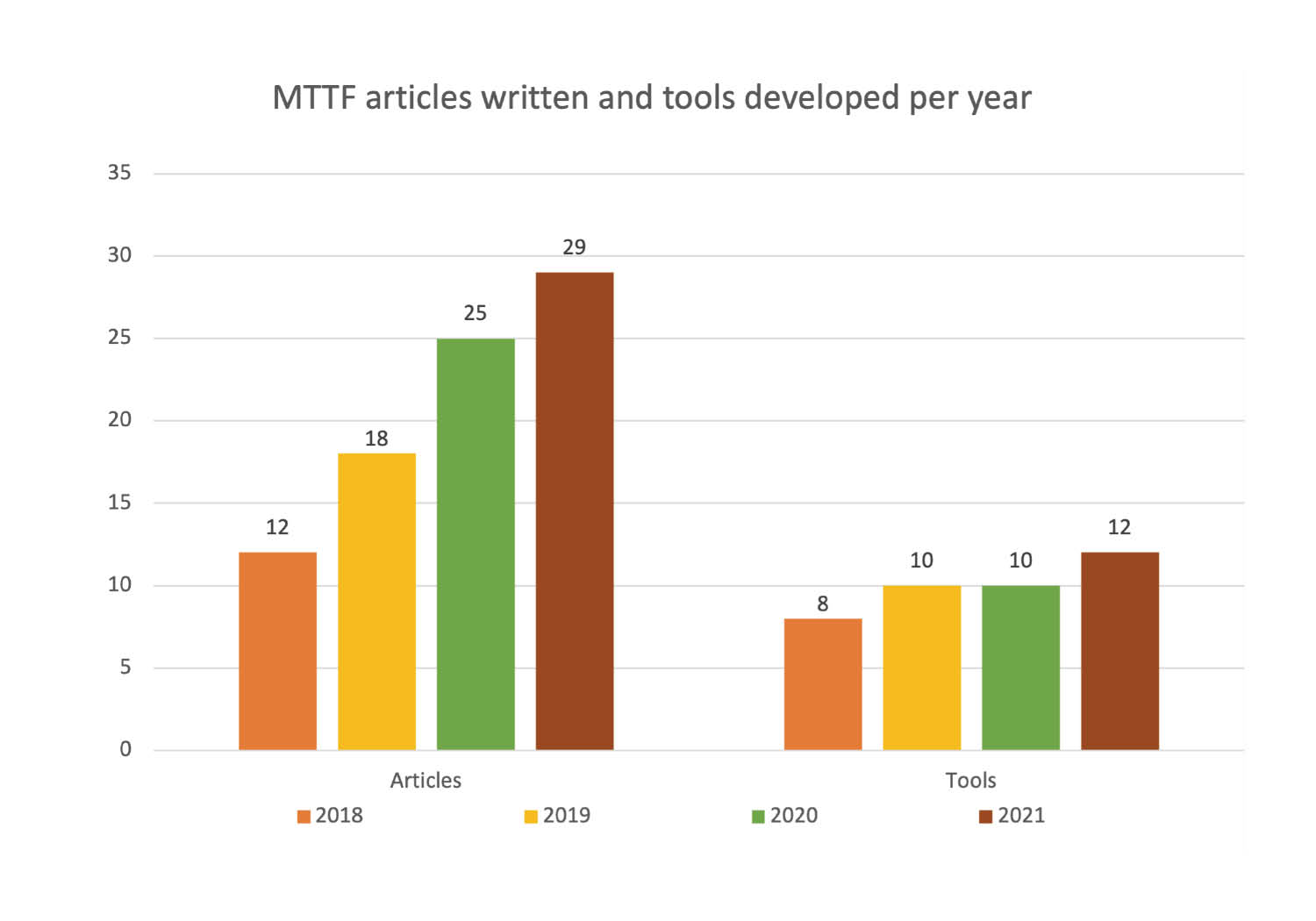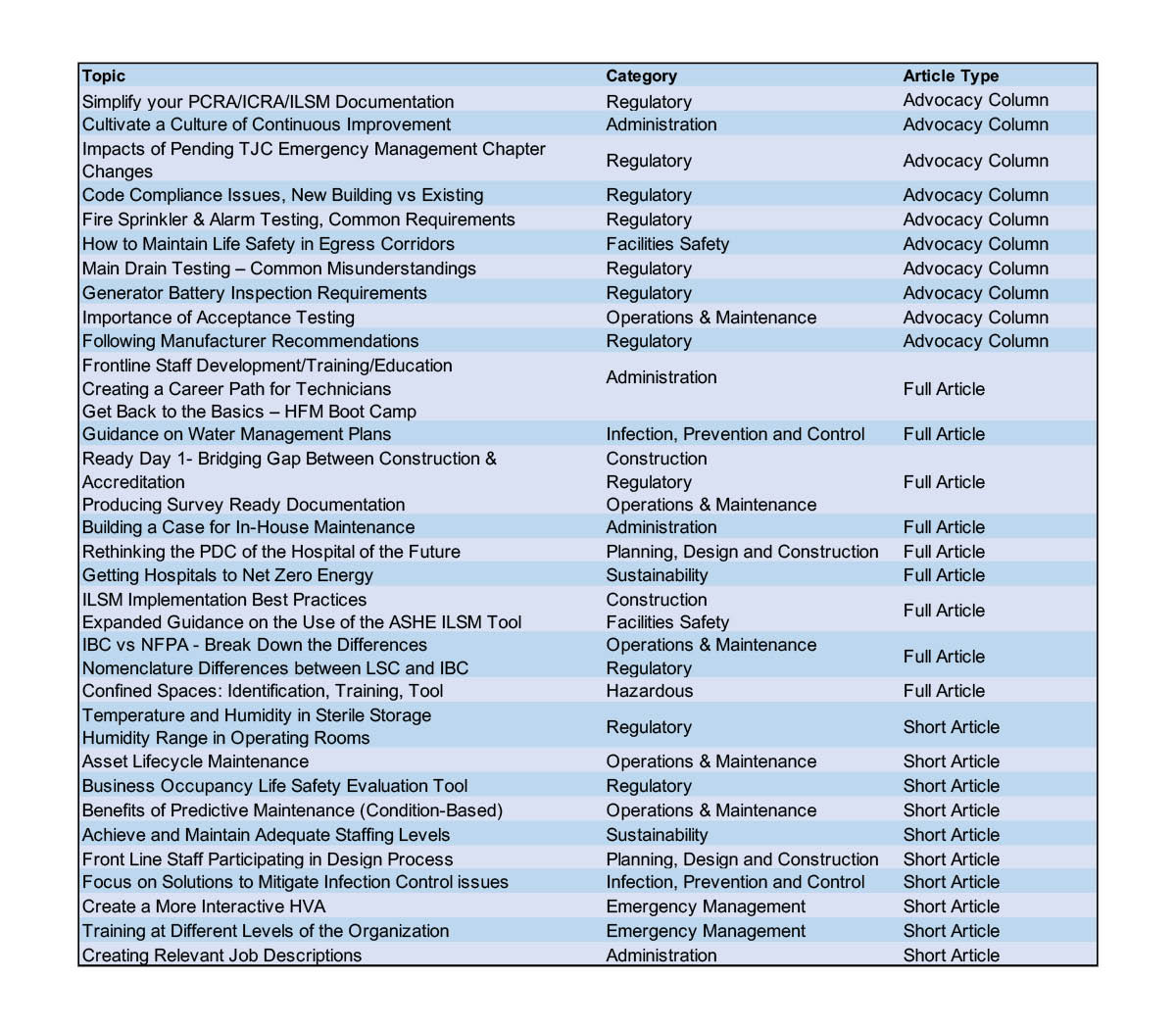Compliance help for ASHE members

Articles and tools created by the member tools task force are available online to ASHE members
Image by Getty Images
The American Society for Health Care Engineering (ASHE) represents professionals who design, build, and operate hospitals and other health care facilities.
The ASHE advocacy team monitors and works to unify the overlapping codes and standards regulating the health care physical environment. Revamping codes and reducing code conflicts allows health care facilities to optimize their physical environments and focus more of their valuable resources on patient care.
The ASHE team also advocates for ASHE members through professional development and credentialing opportunities as well as providing up-to-date tools and resources to help keep health care facilities in compliance.
Because the wide range of codes and standards regulating health care facilities is complex and often difficult to understand even for experts, ASHE members are likely to need some help keeping pace with the quickly evolving regulations.
To assist, ASHE established a member tools task force (MTTF) to evaluate the compliance issues most important to members and create online tools accessible on the ASHE website and discussed in a series of articles in Health Facilities Management (HFM) magazine. The MTTF is a group of knowledgeable ASHE members who create and develop content and tools as resources for the ASHE membership.
Historical roots

A year-by-year look at MTTF articles published and tools developed since 2018.
In 2015, ASHE collaborated with The Joint Commission (TJC) to provide resources and tools to help hospitals comply with life safety and environment of care requirements. TJC identified its top eight physical environment standards that were frequently cited during surveys of hospitals and other health care facilities, which included the following:
- Utility systems (EC.02.05.01).
- Means of egress (LS.02.01.20).
- Built environment (EC.02.06.01).
- Fire protection (EC.02.03.05).
- General requirements (LS.02.01.10).
- Life safety protection (LS.02.01.30).
- Automated suppression systems (LS.02.01.35).
- Hazardous materials and waste management (EC.02.02.01).
Through their collaboration, ASHE and TJC provided resources that helped health care facilities managers keep their organizations in compliance with these challenging standards. TJC created an online physical environment portal to house its resources related to these issues. Additionally, ASHE developed a website called “Focus on Compliance” that included tools, best practices and technical documents.
Each year, TJC identifies the top physical environment standards frequently cited during surveys while ASHE looks for ways to assist organizations to continue to drive for compliance. And, each year, ASHE selects hot topics in the health care physical environment and supports the development of tools and articles written by members, for members.
MTTF growth
Formed in 2017 as a spinoff of Focus on Compliance and a result of the merger between ASHE and HFM, the MTTF has expanded its library of tools and resources. At its start, the group used ASHE’s top 20 advocacy topics, then decided which issues would be addressed through the task force. Once those topics were finalized, the task force identified subject matter experts to author articles and develop related tools.
In late 2021, the MTTF leadership team put together a survey to collect topics, which were evaluated by the ASHE regulatory affairs committee, advocacy liaisons and MTTF members at the annual planning meeting to identify top areas of concern for the health care physical environment. What started in 2017 as a discussion of 20 topics has ballooned to the most recent review of 86 topics that were submitted by ASHE members.
Each year in October, the MTTF leadership team holds the annual MTTF planning meeting in conjunction with ASHE advocacy and sustainability liaison training. The purpose of the planning session is for the MTTF to prioritize the topics submitted for the following year to determine the top 30 that would become articles. Some topics are combined, as they could be included in the same article.
Further meetings are held to establish the final top 30, and discuss combined topics, volunteer assignments, article types, tools to be included and the article schedule. Each year the process becomes more refined, with an increase in the number of articles written and tools developed.
A full-length article consists of 2,000 words in addition to a 300-word sidebar article for a total article length of 2,300 words; a short article consists of 350 words and a tool; and an advocacy column is a 350-word piece.
The MTTF, holds monthly meetings to review schedule deadlines, discuss comments on draft articles and provide feedback on proposed tools.
The process continues to grow and evolve. The use of Smartsheet for tracking article and tool deadlines, content and task force comments has eliminated the need for sending and tracking emails. In addition, the use of Smartsheet automation features for reminders has allowed the task force to focus more time on reviewing content and tools.
Previously, eight of the top 10 TJC-cited standards centered on the physical environment. However, for 2020 (last year of full data), there were only three in the top 10: EC.02.05.01, EP 15; EC.02.06.01, EP 1; and EC.02.02.01, EP 5. The three that remain were in the top 10 in 2014, so the field still has work to do. However, there have been tremendous accomplishments that are proven by the reduction in the physical environment standards in the top 10.
Sample topics
Following are just a few of the more than 80 articles and 40 tools developed by ASHE through the MTTF:
- Complying with door locking requirements. Decoding requirements of the 2012 Life Safety Code and the 2018 International Building Code.
- ASHE e-tool brings clarity to life safety risk assessments. A matrix helps to determine physical environment risk tolerance and document necessary interim life safety measures (ILSMs). Available tool: Life Safety Risk Assessment Tool, a matrix of risk tolerance, allows a health care organization to document the severity of occurrence and the impact of a deficiency. By cross-analyzing these factors, whether the deficiency has the potential to cause major injury or death and whether it is facilitywide or a short duration, the organization can determine if the deficiency is a high, medium or low risk, or whether no ILSM is required.
- Tracking and documenting physical environment compliance. How to prepare for accreditation surveys well ahead of time. Available tool: Environment of Care Documentation Checklist.
- Demystifying life safety decommissioning processes. Help to clarify which life safety features are no longer required and can be removed. Available tool: Life Safety Decommissioning Tool breaks down several life safety features no longer required by code, as well as recommendations to either decommission or maintain these features.
- Maintaining safety of holiday décor. Tips for health care facilities managers on maintaining physical environment compliance during the holiday season. Available tool: YouTube video, “How the Safety Guy Made the Holidays Safer.” Those responsible for the hospital’s environment of care may dread the winter holiday season. It is the time of year in which wanting to celebrate and decorate for the season often clashes with the rules and regulations that facility and safety staff are responsible for upholding. The video teaches facilities managers to work with hospital staff members to ensure a joyous — and safe — holiday season.
- Handling indoor air quality concerns. A layered approach to ensuring safety moves from design and installation to routine hazard surveillance. The performance of hazard surveillance rounds, as it relates to indoor air quality (IAQ), provides a key opportunity to identify IAQ issues. Available tool: The Indoor Air Quality Checklist Tool can be used to supplement hazard surveillance rounds and incorporate items related to IAQ.
- Readiness for accreditation surveys. A health care facility perspective on managing the accreditation process. Available tool: The Survey Guide for Internal Mock Audits, including TJC standards and elements of performance.
- Varying time for fire drills. A hospital fire drill matrix that assists code compliance. Available tool: ASHE has updated its Fire Drill Matrix Tool to reflect new interpretation and knowledge of fire codes. Facilities must meet the +/- 10-day criteria per the quarterly fire drill requirements; locations and device types must be different; certain locations must be specifically considered; and they must ensure they are covering doctors, transient staff and others. MTTF modified the Excel version of TJC’s fire drill matrix planning tool to automatically turn cells red if the proposed drill does not meet the time criteria.
- Water management plan action levels. Developing a water management plan of action. Available tool: “Water Management in Health Care Facilities: Complying with ASHRAE Standard 188” provides guidance on ASHRAE Standard 188 compliance and Legionella risk management. This monograph offers a summary of the threat of legionellosis; gives an overview of ASHRAE 188 requirements; outlines recommended steps for compliance, including the creating of an overall water risk management plan; addresses maintenance procedures, monitoring strategies and emergency responses; and provides additional information on potential pathogens and possible response methods.
- Operating room temperature/humidity code variations. Managing operating room temperature and humidity. Available tool: An ASHE advocacy video offers clear understanding of minimum relative humidity requirements. This training video provides a brief explanation on how temperature and relative humidity affect one another.
- The definition of “monthly.” Advice on dissecting the definition of monthly compliance. When it comes to life safety frequencies, each inspection, testing and maintenance (ITM) preventive maintenance (PM) task is very well defined. Carrying out these ITM PM tasks per defined methods and at defined intervals is crucial for establishing and maintaining compliance. A number of these tasks are required monthly. Available tool: A helpful table provides monthly tasks necessary to stay in compliance.
- Clear interpretation of special locking. Designing and installing new special locking arrangements can be challenging, and assessing existing locking arrangements for compliance is often even more challenging. Available tool: The Special Locking Arrangement Worksheet tool was developed to assist in designing and documenting special locking arrangements.
- Managing nitrous oxide use outside the operating room. Help in managing the increased use of portable nitrous oxide systems. Available tool: ASHE created a tool to help users perform a risk assessment and develop a safety protocol to manage nitrous oxide use outside the operating room.
- Risk assessment for eyewash stations. Taking a good look at eyewash station requirements. Available tool: Risk assessment template that can help to determine when and where to place eyewash stations in health care facilities.
- Master planning to secure funding. Creating an easy-to-follow health facility master plan dividing spaces into subcategories can help to make the master planning process more manageable. Available tool: Sample facility master planning outline breaking a health care facility into subcategories can help to simplify the master planning process. This outline provides a list of subcategories that organizations can use as a starting point as they customize their own plans.
- Plant operations and maintenance labor recruitment, training and continuity (retention). This article is for labor recruitment, training and continuity, and integrating training into staff culture to help with job satisfaction and operational continuity.
- Maintaining life safety drawings. Life safety drawing updates and accuracy are keys to managing living documents and successfully performing facility inspections. Available tool: A sample drawing showing the required life safety building features.
Educating and engaging
ASHE members can access MTTF’s growing roster of articles, spreadsheets, tools and other resources at ashe.org/mttf. These include an increasing number of videos that are related to codes and standards compliance.
Additionally, ASHE members can download numerous compliance tools that were developed independently of the MTTF by ASHE staff, volunteers and partners at ashe.org/tools. These include handbooks, guides, books, videos, monographs, spreadsheets and more. Titles include Developing Code-Compliant Integrated Fire Protection and Life Safety Inspection, Testing and Maintenance Programs; Introduction to Health Care Facilities Management; Resource Scheduling Tool; Infection Control Risk Assessment Guide 2.0; Health Care Facility Manager Guide to Smoke Control; Sustainability Guide; and Health Care Facilities Management Data Nomenclature Standards, among others.
Along with educating ASHE members, these compliance resources promote engagement with the code process, which can sometimes feel overwhelming. Designed to be easy to follow, the resources provide education, guidance, code interpretations and tools that support the implementation of solutions and processes.
Volunteering for MTTF and other ASHE programs
American Society for Health Care Engineering (ASHE) volunteers play an important role in helping the organization to move forward on various initiatives that support the mission of optimizing the health care physical environment. Getting involved in volunteer work can provide personal and professional rewards.
In the case of the member tools task force (MTTF), volunteers can author, co-author and/or provide much-needed feedback and comments on articles and tools drafted by the MTTF. This can be helpful for those looking to apply for a Senior ASHE (SASHE) or Fellow ASHE (FASHE) designation. One of the requirements under publishing is to write articles published in a national magazine and/or journal specific to the health care engineering or facilities management field. Volunteering with MTTF and writing a full article can help meet this requirement.
Those interested in volunteering for the MTTF should reach out to ASHE’s Jonathan Flannery, MHSA, CHFM, FASHE, FACHE, senior associate director of advocacy, at jflannery@aha.org. Additionally, those interested in volunteering for other ASHE projects should go to ashe.org/volunteer to reap the personal and professional benefits volunteering can provide.
Frank D. Rudilosso, PE, CHSP, SASHE, is director of facilities regulatory readiness, NewYork-Presbyterian Hospital, New York City. He can be reached at frr9035@nyp.org.


